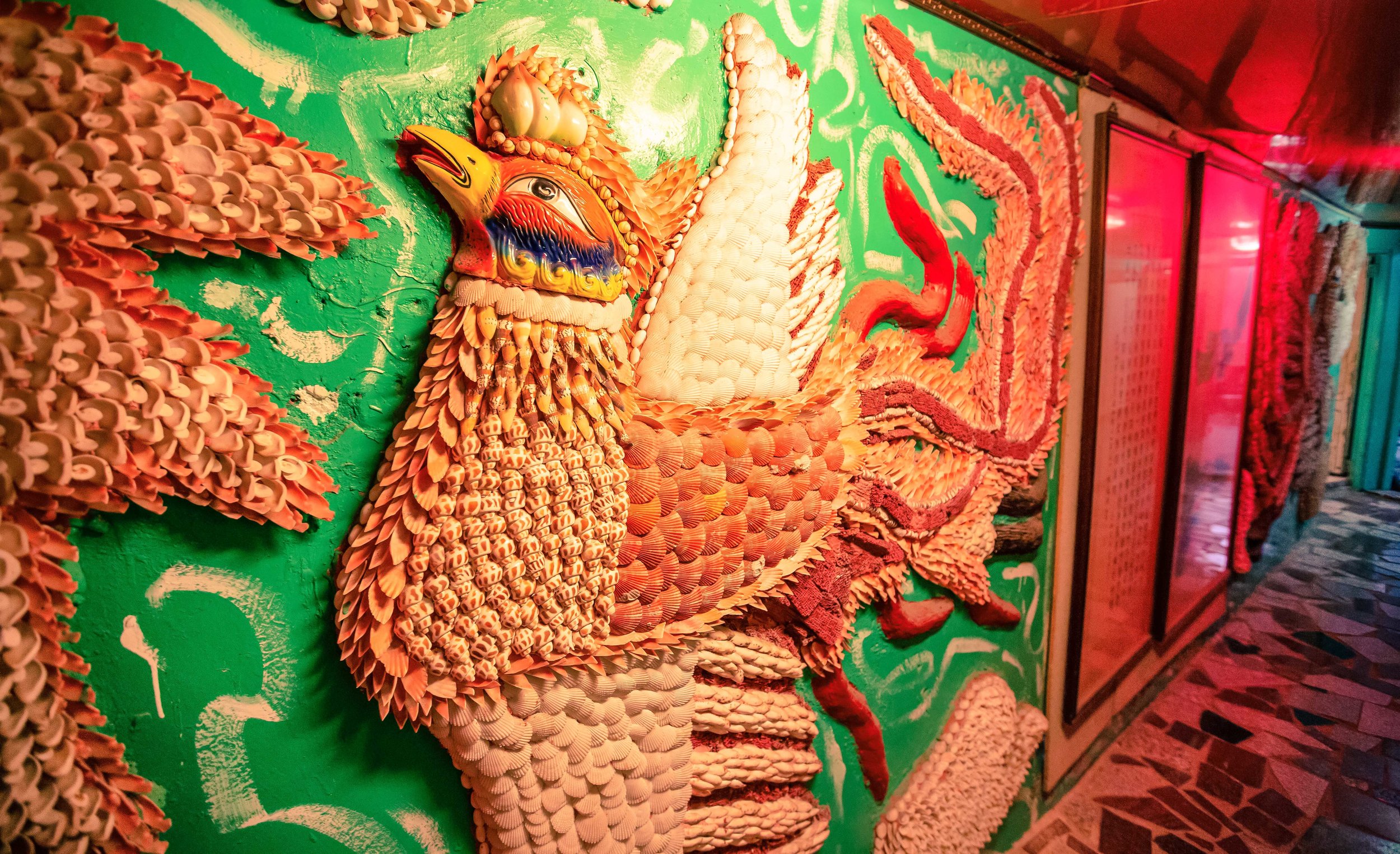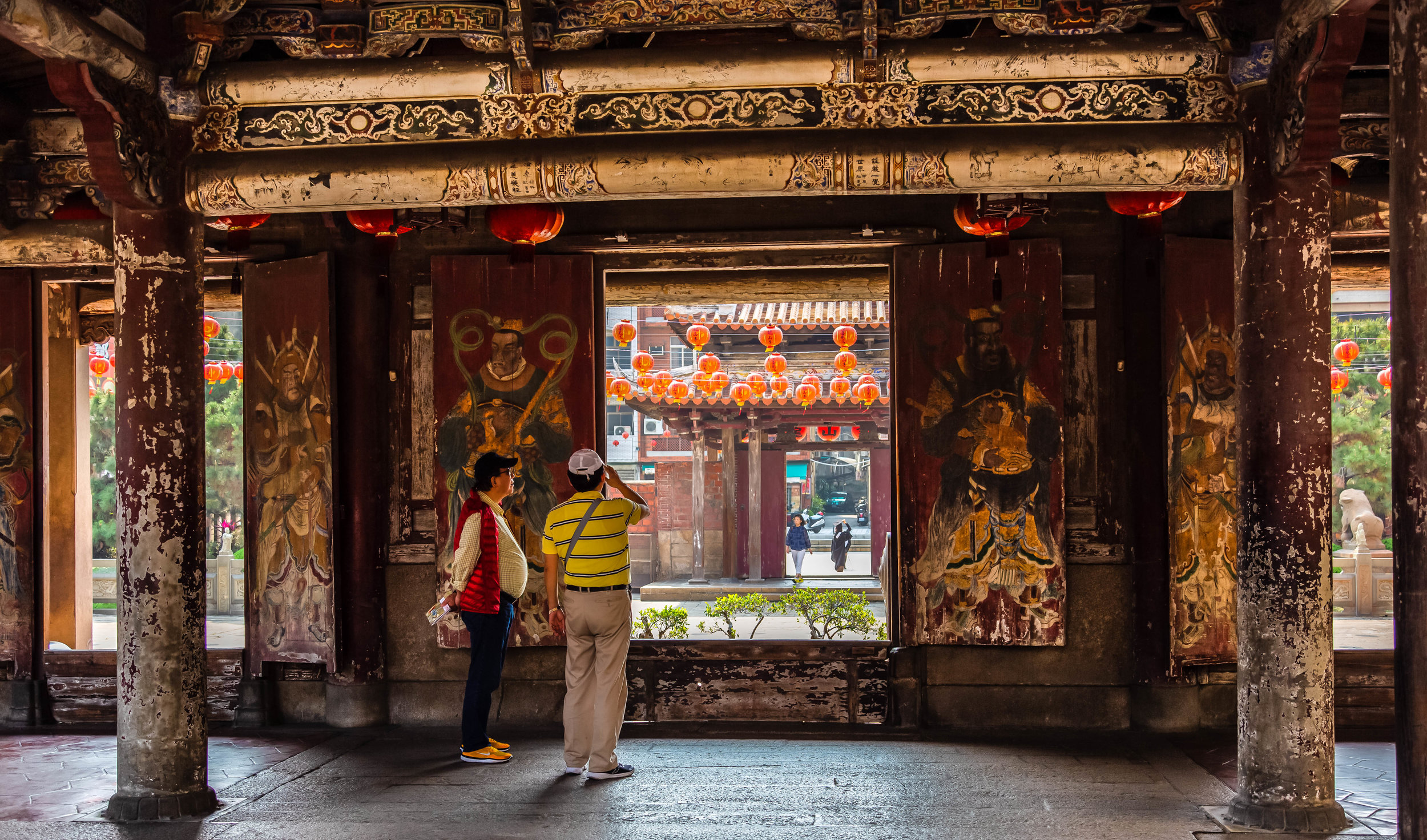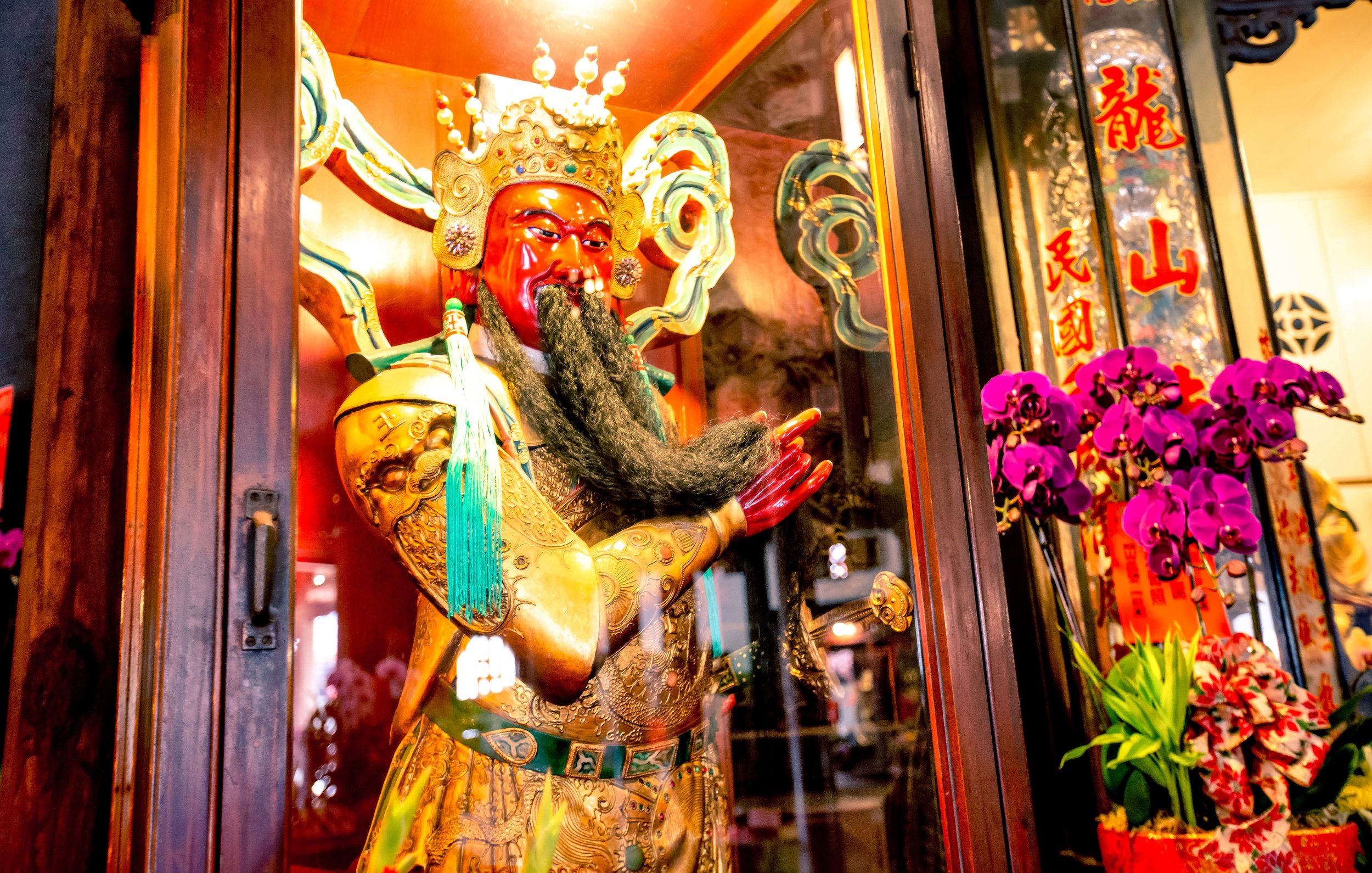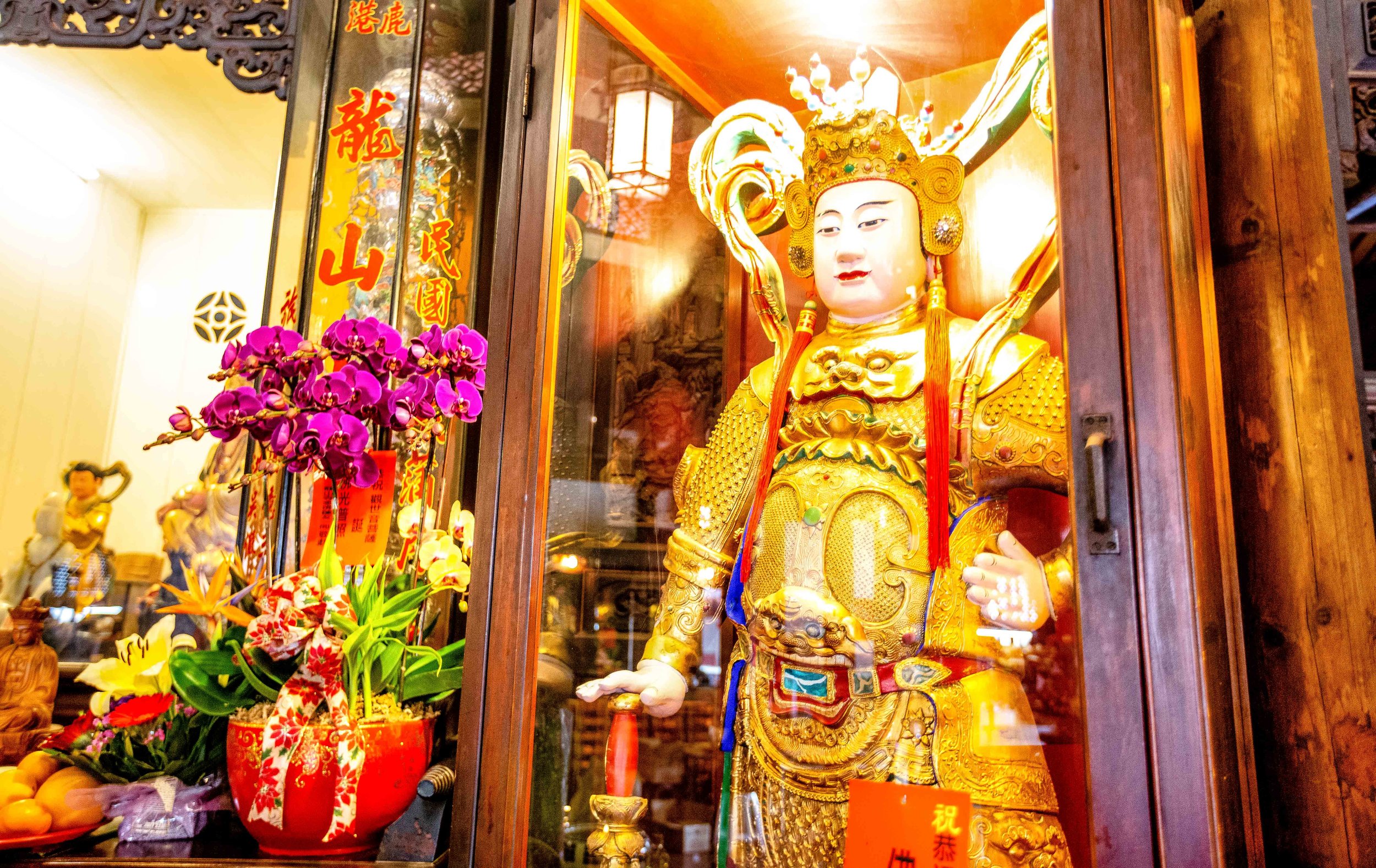One of the benefits of being a foreigner here in Taiwan is that I have somewhat of an advantage over my local friends when it comes to not getting freaked out by the multitude of scary supernatural things that they worry about on a daily basis. Superstition is a real thing here and from a young age people are conditioned to do a lot of quirky things that might make you scratch your head.
I’m pretty sure the only thing I grew up being afraid of was clowns.
When I explore abandoned buildings or weird temples, my friends often ask how I could be so ‘brave’ to visit these places. I’ve never considered it to be a question of whether or not I was being courageous, I just assumed that the difference was that I was brought up in a different culture and the things that bother people here don’t bother me at all.
On the other hand if a clown suddenly jumped out in front of me on a dark street, I’m sure they probably wouldn’t understand why I ran away screaming.
That being said, I have to admit that there are times when I do get freaked out.
There have been a few such occasions.
The first time was when I was exploring an abandoned Military Village (眷村) with my good friend Alexander Synaptic. As I walked into one of the abandoned homes, no less than a half-dozen Huntsmen Spiders dropped down from above the door frame and separated the two of us - I wasn’t sure I was going to make it out alive.
If you don’t know what a Huntsmen spider is, count yourself lucky. They’re bigger than my hand and you can see their eyes moving around. Gross.
Coincidentally, the second time I got freaked out was also thanks to Alexander.
I’m starting to sense a pattern.
A few months ago I wrote about the Sanzhi Seashell Temple on Taiwan’s northern coast. Shortly after Alex mentioned to me that there was another seashell temple in Taiwan and it was even cooler than the one in Sanzhi. He also mentioned that it was one of his favourite temples. In the back of my mind I knew that for a temple to be on the top of his list, it would have to be “special” but I figured I should probably find some time to visit anyway.
When I did visit, I ended up finding myself a bit weirded out.
The Changhua Seashell Temple certainly isn’t what you’d consider a typical Taiwanese place of worship, but it is one that has the ability to freak out locals (and foreigners alike) and acts as a bit of a strange tourist attraction for those brave enough to visit.
The Changhua Sea Shell Temple (彰化貝殼廟)
The so-called “Changhua Sea Shell Temple”, is actually just the nickname given to the “Sanqing Sanyuan Temple” (三清三元宮) which is located conveniently just across the river from the popular tourist town of Lukang (鹿港). The temple is the earliest of Taiwan’s “Sea Shell Temples” (貝殼廟) and like Taichung’s Rainbow Village is the work of a single man who brought his dreams to life.
Constructed by a local man named Huang Chi-Chun (黃奇春), the temple took several decades to complete.
Having previously spent much of his youth working in Taipei, Mr. Huang returned to his childhood home in Changhua in 1978 (民國67年), bought some land and as one does, got himself into the tropical fish farming business.
The thing is though, Mr. Huang was a high school dropout and after working his whole life to provide for his family, purchasing land and starting a business was no small matter. Fortunately his fish farming business was a relatively successful venture and his retirement savings weren’t completely wasted.
I’m sure when Mr. Huang purchased the land that he got it for a really good price. It was after all situated next to a cemetery. I’m also sure that his friends and family would have reminded him about the hazards of purchasing the land, but it would seem that he was a bit of a quirky guy, so he didn’t really pay much attention to the warnings.
Shortly after opening his fish farm, Mr. Huang started having strange dreams where images of a mysterious underwater temple appeared to him almost every night. Memories of his days as a soldier also often appeared in his dreams and in particular he tells of a vivid recollection of a time when a ranking officer gifted him with statues of the “Three Pure Ones” (三清道祖).
The frequency of the dreams convinced Mr. Huang that something supernatural was taking place and that his visions were telling him that it was his responsibility to construct the temple exactly as it appeared in his dreams.
Interestingly Mr. Huang claims that once the temple was completed his dreams suddenly stopped, which he took as a message of divine gratitude for the work he had spent decades to complete.
Like Noah who constructed the Ark, Mr. Huang had little experience in temple design or building techniques, so the construction of the temple required a bit of divine assistance. Save for hiring a few workers to help him construct the foundation of the temple, the rest of the temple was completed single-handedly between 1978 and 1993 when it was (roughly) finished.
To construct the temple, Mr. Huang collected several species of mollusc shells from nearby waters (Specifically: 唐冠螺, 鐘螺, 錐螺, 蠑螺, 寶螺, 玉螺, 鳳凰螺, 海兔螺, 法螺, 貝殼) and purchased a large amount of sandstone from Hengchun (恆春) in the south of Taiwan.
To fix the seashells to the walls, Mr. Huang first connected them together with a network of wires and then molded them into the walls with the sandstone - which is notable for its relatively soft nature and the ease of carving it into various designs.
The temple sits on 200 square meters of land but is actually just a small part of a larger complex that consists of Mr. Huang’s fish farm, a seashell shop and what looks like a failed attempt at creating a restaurant - oh and of course the grave of his wife is inside as well.
As you drive down the narrow country road to the temple you can’t help to notice the odd shape of the exterior as you approach. The exterior which is almost castle-like is covered in white seashells that have turned a shade of yellow or black due to exposure to the sun and pollution.
Near the front gate you’ll find a parking lot that sits between directly between the temple and the cemetery on the other side.
Something you’ll note as soon as you step out of your car is that the area is infested with insects - This shouldn’t really be a huge surprise though considering the temple is located on farmland, next to a fish farm and a million sea shells.
The entrance to the temple is probably one of the most attractive parts of the whole complex (at least in my opinion). The gate has a traditional round door adorned with seashells on the sides. There is a wooden plaque above the entrance with really cool Chinese calligraphy indicating the name of the temple and porcelain images of gods on top of the arch. The gate is also somewhat shrouded in greenery with trees and plants on both sides giving it somewhat of a natural look as you enter.
Once you pass through the gate, you will be immediately met with an incense urn and a walkway that is lined with creepy-looking figures on one layer and more recognizable local deities on the layer above.
The nightmare-inducing human-like figures that line the walls on both sides of the walkway are made even creepier thanks to the intricate coral decorations behind them that look eerily similar to bones.
As you approach the Main Hall of the temple, you’ll walk next to four pillars decorated with large sea-shells that lead to the roofed part of the temple. Like the rest of the temple, the roof is intricately decorated but it a bit hard to see given the angle of the walkway that leads up to it.
After you’ve passed the four pillars you’ll notice that there is a walkway on the left and right with even more sea-shell designs. Before you enter the Main Hall its a good idea to walk around the perimeter of the exterior of the hall to check out the murals of dragons, phoenixes and other mythical creates that Mr. Huang created using sea shells and coral.
The whole thing is surreal and reminded me of some of the awkward 1980’s style designs that I saw at the abandoned amusement park in Taoyuan.
The entrance to the Main Hall is similar to the main gate, however the door here is octagonal (八卦) and has dragon pillars on either side. The plaque above the door likewise uses the same style of Chinese typography as the entrance, but this time it is written horizontally with the words “Sanqing Sanyuan Temple” (三清三元宮).
When you enter the Main Hall of the temple you’ll suddenly realize that there is a distinct lack of sea shells or coral and it would seem the whole underwater theme got thrown out the window.
The Main Hall is dark, smoky, full of dust and somewhat unkept.
For local visitors, its customary to pay respects to the deities enshrined inside, but as far as temples go, the whole set up is a bit odd. There is only one shrine, and its littered with a bunch of randomly placed statues surrounding the “Three Pure Ones” (三清道祖). Offhand I recognized the Earth God (福德正神), Guanyin (觀音菩薩) and Kuixing (魁星).
Now here’s where things get a bit creepy.
While I was inside the shrine room attempting to take photos in the dark, the caretaker lady who runs the place came in and told me that it was closing time. She informed me that she already closed the gate behind me, so I’d have to exit through the basement.
So here I am in this weird temple next to a cemetery that is infested with insects and the lady is telling me that I need to go through the basement to exit.
If you’re not already aware, basements aren’t really all that common here in Taiwan, so the fact that I’d have to “exit” through the basement was a bit weird. Not only that, the stairs down to the basement were strangely steep and narrow and at the bottom the lightbulbs were neon red.
I was pretty sure I was about to get murdered.
Fortunately Taiwan is a pretty safe place, so I sucked it up and walked down the stairs which opened up to a weird hallway with more neon lights on the walls as well as more of Mr. Huang’s sea shell art.
After checking out some of the murals, I decided it was about time to get my ass out of there.
After a minute or two of walking down the hallway it opened up to a large area where you can buy sea shells and check out the fish farm. By that time though, I wasn’t really very interested in sticking around any longer.
It was getting dark, I had to get my rental scooter back to Changhua City and hop on the train back home.
There are a lot of reasons why this place is likely to freak people out. It’s not your typical temple, but then again, there are quite a few flamboyant places of worship constructed by ‘imaginative’ people around the world, so who am I to criticize this guy’s life’s work and his art?
I visited and got out alive, so I can’t really complain, right?
Getting There
Address: 彰化縣福興鄉福南村振興巷10-1號
Getting to the temple isn’t really that difficult if you have access to Google Maps, but in this case you’re unfortunately not going to be able to rely on public transportation to get there.
If you’d like to visit, the temple is a short distance away from the popular tourist town of Lukang (鹿港). To get there you simply cross the river that takes you into Fuxing Township and then follow Fusan Road (福三路) until you reach Zhengxing Alley (振興巷). From there you’ll turn and drive down a narrow road until you reach the temple.
The best way to get there is to either ride a scooter, drive a car, take a taxi or ride a Youbike. You can easily find YouBikes in Lukang and the ride to the temple is less than two kilometres, so it shouldn’t take you too long.
If I were to compare the two sea shell temples, it would be easy to say that the temple in New Taipei is the clear winner when it comes to beauty. That however wouldn’t take into consideration that the temple had a team of artisans and copious amounts of cash thrown at it. This temple on the other hand was fully funded, designed and constructed by a single man who used his ingenuity and several decades of his life to make it into what it is today.
While I don’t particularly understand the necessity of a temple full of dead aquatic life ripped from the ocean, there’s not much I can say now that its been completed. Religion makes people do weird things sometimes and while this temple might be a bit creepy, a bit haunted, or whatever else you’d like to say, its also an interesting look into the creativity of a man whose work I suppose you could compare to the work Gaudi did on Barcelona’s Sagrada Familia - and if thats the case, I guess you could say that’s quite the compliment.
Whether or not you should visit is up to you. It is a weird and wonderful place and if you’re looking for something different, this is one that you’ll not want to miss.
































































